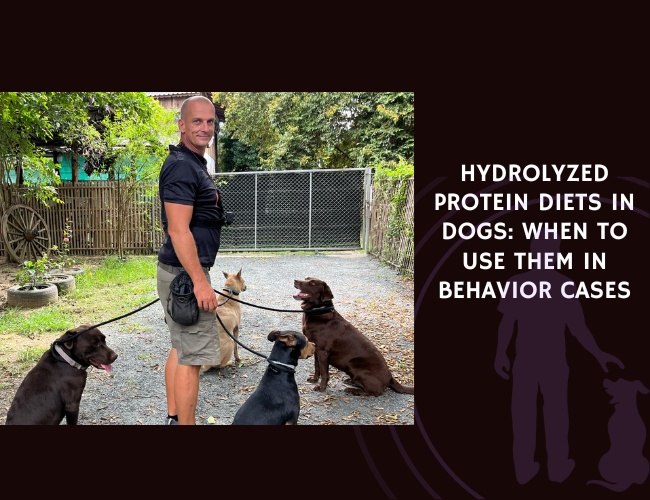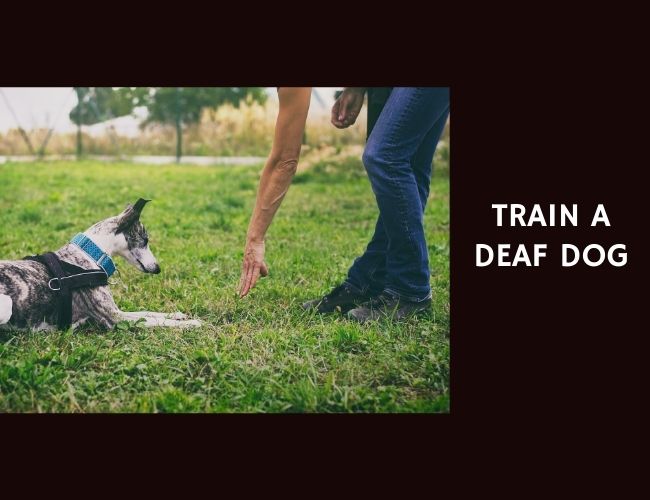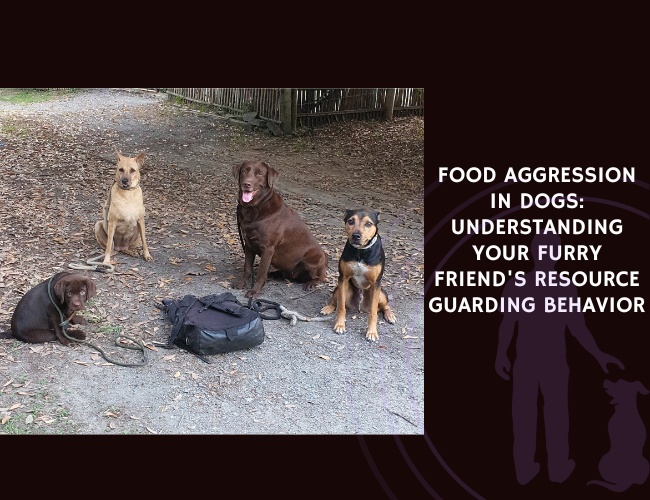Introduction to Hydrolyzed Protein Diets
What Are Hydrolyzed Protein Diets?
Hydrolyzed protein diets are specially formulated dog foods where proteins are broken down into much smaller parts. Instead of whole protein molecules, these diets contain fragments called peptides and individual amino acids. The breaking down process uses enzymes to “pre-digest” these proteins, making them tiny compared to those found in regular diets. This means the proteins are less likely to trigger an immune response in dogs who are sensitive or allergic to certain foods. Think of it as taking a puzzle and separating every piece so your dog’s body can handle each one much more easily 🎯.
Why Does Reduced Protein Antigenicity Matter?
The term “antigenicity” means how likely something is to cause an immune reaction. Whole proteins in food can look very “foreign” to a dog’s immune system, especially if your dog already has sensitivities. This can lead to itchy skin, stomach upset, or even changes in behavior. When proteins are hydrolyzed, their antigenicity drops dramatically. The smaller bits go unnoticed by the immune system, helping to avoid reactions that could cause inflammation or illness. Ultimately, this means your dog feels more comfortable and less stressed.
How Do Diet and Behavior Connect in Dogs?
Many people don’t realize how closely food and behavior are linked in dogs. When a dog has undetected food intolerance or allergy, it often causes microscopic inflammation in the gut. This can start a chain reaction:
- Gut inflammation sends stress signals through the gut-brain axis—a two-way communication system between the gut and the brain.
- This may show up as anxiety, irritability, or behavior that’s out of character for your dog.
- If the immune system is working overtime to handle food allergens, it can affect the dog’s overall mood and how they interact with the world.
Hydrolyzed protein diets lower this immune and inflammatory load, helping regulate gut health and, in turn, supporting a happier, better-behaved dog.
Understanding these basic concepts helps pet owners and professionals see that what’s in your dog’s bowl can shape how they feel and behave every day.
Understanding the Gut-Brain Axis in Dogs
Exploring the Gut-Brain Connection
The gut and brain have a special relationship, often called the “gut-brain axis.” This connection allows both organs to send signals back and forth through nerves, chemicals, and hormones. So, what happens in the gut doesn’t just stay there—it can directly impact a dog’s mood and behavior!
How Gut Health Talks to the Brain
The gut is packed with nerves, including the vagus nerve, which sends information up to the brain. When the gut is happy and healthy, it gives off “good” signals that help keep the mind calm and balanced. But when the gut is upset—due to inflammation, sensitivity, or infection—it can send stress signals that affect mood and behavior. That’s why a dog with an upset stomach might seem anxious, irritable, or even aggressive.
Consequences of Gut Inflammation
Chronic inflammation in a dog’s gastrointestinal tract can change how the central nervous system works. This kind of ongoing irritation can come from food allergies or intolerances. When the gut is inflamed, it may release immune chemicals that travel through the body and reach the brain. These chemicals can increase stress, worsen anxiety, or trigger unexpected behavior changes.
A leaky gut, for example, lets unwanted particles and bacteria pass into the bloodstream. This causes even more inflammation and can upset a dog’s normal mind-body balance, sometimes showing up as hyperactivity, aggression, or anxiety.
Gut Health’s Role in Behavior and Mood
Keeping the gut healthy is key for dogs’ emotional well-being. If a dog’s gut is inflamed or out of balance (called dysbiosis), the signals it sends to the brain can get mixed up. This can lead to behavioral issues that don’t always seem related to food. Sometimes, a dog’s anxiety, stress, or sensitivity to noise can actually start with what’s happening in their digestive system.
By supporting gut health and reducing inflammation, we can help promote calm, stable behavior in dogs. 🐶
Let’s keep exploring how food sensitivities may show up as surprising changes in mood and behavior.
Food Allergies and Their Behavioral Impact
Undiagnosed Food Sensitivities and Behavior Changes
Food allergies in dogs can be sneaky. While itchy skin or an upset tummy are common signs, sometimes the only clue is a change in behavior. Dogs with food sensitivities may suddenly act irritable, restless, anxious, or even show rage-like episodes. This happens because the immune system reacts to certain foods, causing inflammation not just in the gut, but throughout the body. Over time, this chronic inflammation can affect your dog’s mood and stress levels, making them seem like a totally different pup.
The Leaky Gut and Dysbiosis Link
Let’s dive into what’s going on the inside. “Leaky gut” is a term used when the lining of the intestine becomes too permeable. This means unwanted stuff—like undigested food or bits of bacteria—can leak into the bloodstream. If the gut’s good bacteria (the microbiome) get out of balance, called dysbiosis, things can get even worse. This combo sends constant alarm signals to the immune system, leading to more inflammation and trouble for the gut-brain axis. The result? Dogs may act more anxious, agitated, or even aggressive, all due to their bodies fighting this undercover battle.
Systemic Inflammation and Mood
When a dog’s immune system is on high alert, stress hormones can surge. This doesn’t just make the body feel bad—it can confuse your furry friend’s brain, too. Systemic (whole-body) inflammation makes stress reactivity higher, which can mean more barking, pacing, or energy spikes. Dogs may struggle to relax, get snappy, or seem unusually down. The key point: food allergies and intolerances don’t only cause physical complaints; they can deeply affect how a dog feels and behaves day to day.
Changing your dog’s diet, when advised by your vet, can be a gentle way to support both their body and mind. With careful observation and collaboration, it’s possible to uncover food as the root of some surprising behavior issues.
Behavioral Indications for Hydrolyzed Diet Use
Recognizing Behavioral Signs
When dogs develop food sensitivities, the effects can show up in more ways than just itchy skin or tummy troubles. Some dogs start to act out in ways that surprise their owners and veterinarians alike. Common behavioral symptoms include noise sensitivity, anxiety, rage-like episodes, and hyperactivity. Imagine a dog who reacts to every little sound or a pup who suddenly seems unable to calm down. These can all be signs that chronic inflammation is affecting your dog’s mood and stress levels.
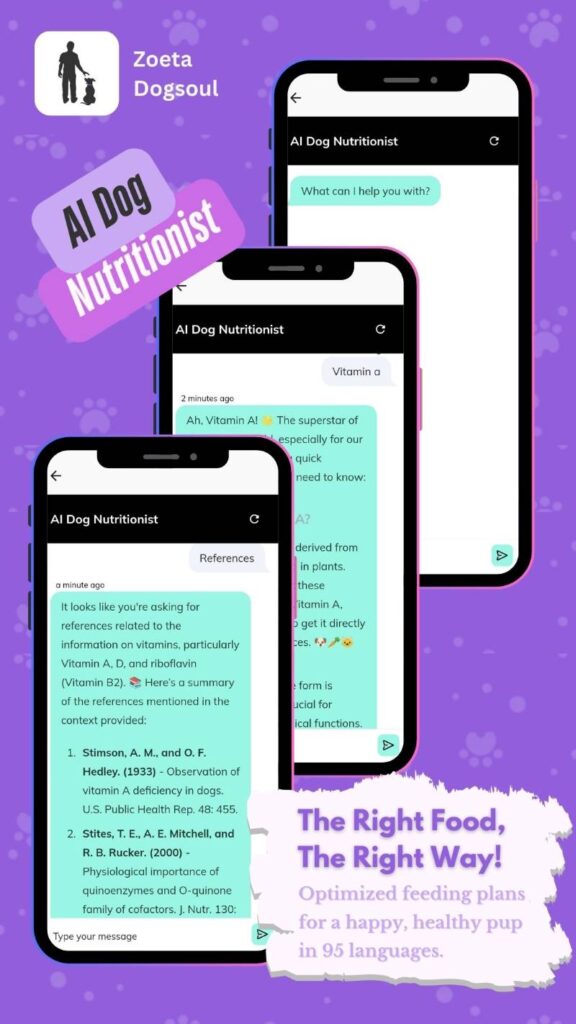
When to Consider Hydrolyzed Protein Diets
Hydrolyzed protein diets might become an option when these behavioral changes are linked to suspected or known food sensitivities. These diets are made by breaking down proteins into smaller parts, which makes them less likely to trigger the immune system’s alarms. Dogs with ongoing behavioral issues—such as reacting aggressively out of nowhere, being unusually restless or agitated, or struggling with persistent anxiety—may benefit from these special diets if other causes have been ruled out.
Here are some signs that a hydrolyzed diet might help:
- A dog that startles easily or cannot settle in noisy environments
- Unexpected aggression or “rage-like” outbursts without an obvious trigger
- Continuous restlessness, pacing, or apparent inability to relax
- Anxiety that does not respond to routine training or environmental changes
- Sudden hyperactivity not linked to situational stress
Differentiating Behavioral Causes
Before switching diets, it’s important to ensure these behaviors aren’t due to other health problems or environmental stressors. Work with your veterinarian to rule out pain, neurological issues, or household changes. Only after a thorough evaluation should diet trials be considered.
Understanding when a hydrolyzed protein diet might help is a collaborative process. By watching for these key signs and working closely with professionals, pet owners can offer their dogs real relief and set them on the path toward better emotional balance.
Let’s now look deeper into how teams assess dogs before starting dietary approaches.
Diagnostic Protocols Before Diet Implementation
The Importance of a Thorough Assessment 🩺
Before reaching for a hydrolyzed protein diet, it’s essential to look at the whole picture. Dogs showing irritability, anxiety, or sudden aggression may have undiagnosed food sensitivities, but these issues can have many causes. Veterinarians must start with a detailed medical and behavioral history. This includes checking for health problems, environmental stressors, and lifestyle changes that might explain the behavior. Skipping this step can lead to missing other medical conditions or environmental triggers.
Elimination Diet Protocols: Step-by-Step Guide
An elimination diet is often considered the gold standard for uncovering hidden food sensitivities in dogs. This trial involves:
- Selecting a diet with limited and novel protein sources, often hydrolyzed proteins.
- Feeding this diet exclusively (no treats, flavored medications, or table scraps!) for around 6-8 weeks.
- Monitoring and documenting all behavioral and physical changes—think of it as detective work for your dog’s health.
If symptoms improve, a “challenge” phase follows, where old foods are gradually reintroduced to confirm if symptoms return. This rigorous approach can uncover previously unrecognized dietary triggers for both gut and behavioral issues.
Allergy Testing: Tools and Limitations
There are tests like intradermal skin testing and serum allergy panels that can sometimes flag specific allergens. However, with behavior cases, these tests often fall short. They may not accurately detect food sensitivities impacting mood or behavior, as the immune response may differ from classic allergic reactions. Thus, while helpful for some situations, allergy testing is usually combined with elimination diet trials rather than used alone.
Setting Up Success 🌱
A careful diagnostic process helps match the right diet to the right dog—improving both behavior and gut health with the least guesswork. This supportive, evidence-based approach makes sure furry friends get the best care without overlooking other important factors.
Stepping forward, understanding how a specialized diet may influence behavior gives hope to these struggling dogs, opening doors for improved quality of life and closer bonds with their humans.
Calmer. Through. Nutrition.
Inflammation affects behaviour.
Many behavioural issues that seem sudden or irrational are actually rooted in chronic, low-grade inflammation. When dogs ingest foods they’re sensitive to, their immune system responds—and this response often extends beyond the gut. Mood swings, reactivity, and anxiety can all be downstream effects of an immune system in constant alert.
Hydrolysed means safer.
Hydrolysed protein diets break proteins into smaller units that are less likely to be flagged as threats. For sensitive dogs, this reduces immune load and gives the gut a chance to heal. As the body calms, so does the brain—often leading to more predictable, relaxed behaviour without needing behavioural medication.


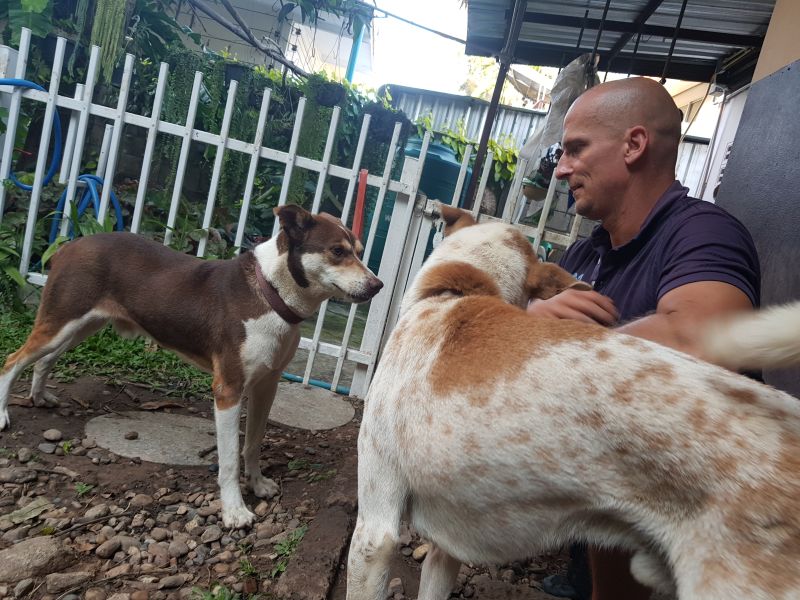
Not just physical change.
What’s often overlooked is how dietary shifts can support emotional regulation. When a dog feels better inside, they respond better outside. Training becomes easier, reactivity decreases, and trust is easier to rebuild. Nutrition won’t fix every case—but for the right dog, it can change everything.
Mechanisms of Behavioral Improvement
Lowering Systemic Inflammation for Calmer Dogs 🧠
Hydrolyzed protein diets work by reducing the body’s immune response to food. When dogs with food sensitivities eat regular diets, their immune systems can become activated. This leads to chronic inflammation that not only affects the gut but can also spread throughout the body. By feeding dogs proteins that are broken down into smaller pieces, hydrolyzed diets make these reactions much less likely. Lower inflammation in the body means fewer stress signals are sent to the brain, helping dogs feel calmer and less anxious overall.
Boosting Nutrient Absorption and Gut Health 🌱
Another key benefit of hydrolyzed protein diets is better nutrient absorption. When the gut isn’t inflamed, it can absorb vitamins, minerals, and other nutrients more effectively. This means dogs get the building blocks they need for healthy brains and bodies. Improved nutrition supports balanced energy, steady moods, and overall well-being. Many pet parents notice their dogs seem more energetic and less irritable once their gut health improves.
Easing the Immune System’s Load 🎯
Hydrolyzed protein diets also help by decreasing the workload of the immune system. When the immune system isn’t constantly fighting off food allergens, it can focus on its main roles—like protecting dogs from real threats. This “reset” allows the body to break the cycle of constant alert, which has been linked to mood problems. As a dog’s immune stress drops, positive changes often appear: less anxiety, better sleep, and more stable behavior.
Building the Foundation for Change
All these mechanisms work together to support the gut-brain axis. When inflammation is reduced, nutrient absorption is improved, and the immune system is calmer, dogs are more likely to experience relief from mood and behavior problems. Addressing the root cause inside the gut can pave the way for a happier, healthier dog—both inside and out.
This whole-body approach encourages professionals to consider dietary changes as a true partner in behavioral therapy, supporting treatment success and overall wellness.
Evidence and Case Studies
What Current Research Shows
Emerging evidence points toward the value of hydrolyzed protein diets in helping dogs with certain behavioral problems. These diets contain proteins broken down into tiny pieces, called peptides and amino acids, making them less likely to cause an immune reaction. Several studies highlight that dogs with irritability, anxiety, hyperactivity, or aggression sometimes show notable improvement when switched to a hydrolyzed protein diet. These changes in behavior usually partner up with fewer digestive troubles and skin issues—like less itchiness or upset stomachs—suggesting a direct link between gut health and how dogs act.
Observed Connections in Practice
Veterinarians and behaviorists have watched dogs transform when their diets are adjusted. Some dogs with sudden rage-like episodes or out-of-the-blue anxious behaviors see those issues calm down after weeks on a hydrolyzed diet. Along with these behavioral shifts, guardians often notice fewer digestive upsets—less diarrhea, gas, or vomiting—which further hints at the gut-brain relationship.
Improvements are likely due to several mechanisms:
- Reduced systemic inflammation: Calming the immune system lowers stress signals sent to the brain.
- Better nutrient absorption: Dogs get more of the nutrients they need, supporting mind and body health.
- Decreased immune load: The immune system, now less busy fighting food triggers, can help regulate mood more easily.
Gaps and Limitations in Today’s Science
While these results look promising, it’s important to stress that much of the current research relies on small case studies or observations, rather than large and controlled clinical trials. This means there is more to learn about why some dogs improve and others do not. Also, not every dog with a behavior problem has a food sensitivity, so dietary changes should always be part of a broader treatment plan. Future studies will need to focus on larger groups of dogs, more rigorous designs, and tracking outcomes over time to draw stronger conclusions.
These insights support a team approach, where veterinarians, nutritionists, and behaviorists work together. This leads smoothly into how a coordinated, collaborative approach can best support dogs and their families.

Implementing Hydrolyzed Diets as Part of Behavioral Therapy
Integrating Diet into the Behavior Plan
Helping a dog with behavioral challenges is a team effort, and diet is an important piece of the puzzle. When a dog shows possible food-related behavior issues—like anxiety, restlessness, or sudden mood changes—it may be time to look at what’s in their bowl. Hydrolyzed protein diets, made from proteins broken down into tiny parts, are less likely to cause a reaction in sensitive dogs. These diets can help reduce tummy upset and even improve a pet’s mood when added to a full treatment plan 🐶.
Consistency: The Secret to Success
Staying consistent with a hydrolyzed protein diet is crucial. Switching foods or giving non-approved treats—even just a little—can bring back old symptoms. Set up clear household rules so everyone feeds the dog only the prescribed food. Keep snacks and table scraps out of reach. Remind all caregivers that sticking to the plan supports both gut health and behavior improvements.
Consistent feeding:
- Keeps the immune system from being triggered.
- Reduces inflammation and supports the gut-brain balance.
- Gives enough time to see real changes—behavioral shifts may take several weeks.
Missing even a few days of strict compliance can undo progress made during a diet trial.
Monitoring and Evaluating Progress
Tracking your pet’s changes is both rewarding and essential! Use a journal or app to record daily observations, such as:
- Behavioural symptoms (like barking, pacing, aggression).
- Energy levels and sleep patterns.
- Digestive changes (stool quality, vomiting, itching).
Work closely with your veterinarian and trainer to review progress every couple of weeks. They may ask you to answer specific questions or fill out surveys. Be patient—some behaviors improve more slowly than others, especially if gut inflammation has been present for a while.
Dogs thrive with routines, care, and the right nutrition. Every step you take builds the foundation for brighter moods and harmonious behavior.
Collaborative Approach to Treatment
The value of teamwork in canine behavioral care
Helping a dog with behavioral issues that may be linked to food sensitivities requires collaboration. No single professional has all the answers — instead, true progress happens when veterinarians, veterinary nutritionists, and dog behaviorists work together in a supportive, communicative team. This approach ensures that every aspect of a dog’s health and behavior is addressed with care and expertise. 🐶✨
How integrated care leads to better outcomes
An integrated treatment plan means that all specialists share information and insights to form a complete picture of the dog’s needs. For example:
- The veterinarian diagnoses food allergies or intolerances and monitors medical progress.
- The nutritionist selects an appropriate hydrolyzed protein diet and ensures the dog’s nutritional requirements are met.
- The behaviorist helps track behavior changes, advises on stress management, and designs training strategies.
When these experts combine their knowledge, they can identify the root cause of a dog’s distress more quickly and deliver a truly effective treatment plan. This cross-disciplinary approach helps reduce unnecessary treatments, speeds up diagnosis, and allows for faster, more positive changes in the dog’s well-being.
Communication strategies for pet care teams
For the best results, open and regular communication among professionals is a must. Here’s how teams can stay on the same page:
- Schedule regular updates or case conferences.
- Use shared records to track diet, symptoms, and behavioral changes.
- Encourage questions and feedback from everyone involved — including the pet owner.
- Give pet owners clear, step-by-step guidance for at-home care and monitoring.
This loop of feedback makes it easier to spot patterns, adjust plans swiftly, and maintain consistency in care. Most importantly, it strengthens trust and cooperation between the professionals and pet owners, which can make a world of difference for anxious or reactive dogs.
By working as one team, everyone benefits — especially the dog, whose health and happiness are the true goals. 🐾
Conclusion and Future Directions
Reflections and Key Considerations
Hydrolyzed protein diets offer an exciting, supportive option when managing behavioral problems in dogs—especially behaviors linked to food sensitivity or chronic inflammation. Their unique formulation with enzymatically broken-down proteins means they are much less likely to spark an unwanted immune response. This feature makes them ideal for dogs suffering from food allergies, gut inflammation, or skin troubles, all of which can affect behavior and mood 🐶.
The most important aspect of using these specialized diets is careful assessment. Not every anxious, restless, or hyperactive dog will benefit from a diet change. That is why a thorough diagnostic process—guided by a veterinarian—is vital. This process includes elimination diet trials and a review of allergy test results before swapping to hydrolyzed food. By doing so, veterinarians and pet owners can avoid unnecessary restrictions and ensure dogs get a balanced, nourishing diet.
Emerging Research and Promising Avenues
Current research hints at a meaningful link between diet, gut health, and canine behavior, though this field is still young. Studies suggest that dogs eating hydrolyzed diets often show not only better digestion and skin condition but also calmer, more predictable behaviors. These improvements likely come from lowered systemic inflammation, better nutrient absorption, and less immune strain. Yet, much remains to be learned about how different foods shape a dog’s mood, mind, and reactions to stress. Future studies will help us understand these connections more deeply and may open the door to targeted prevention strategies.
Practical Takeaways for Professionals and Pet Owners
If you are a veterinary professional, working closely with nutritionists and behaviorists will help you view behavioral problems through a holistic lens. For pet owners, remember that patience makes all the difference—dietary changes take time, and tracking your dog’s progress with care is key. Collaboration allows for faster identification of diet-related behaviors, reducing unnecessary interventions and supporting each dog’s happiness and well-being.
By staying informed and embracing teamwork, everyone involved can help dogs lead healthier, happier lives. 🦴

